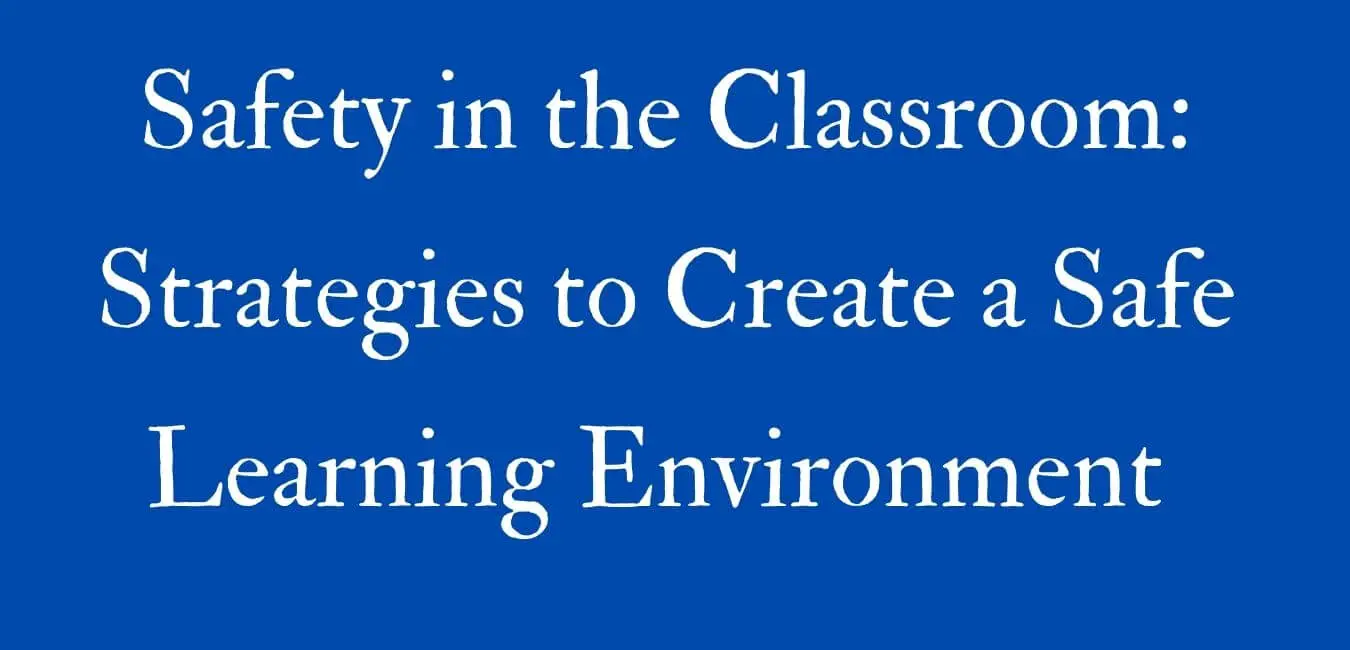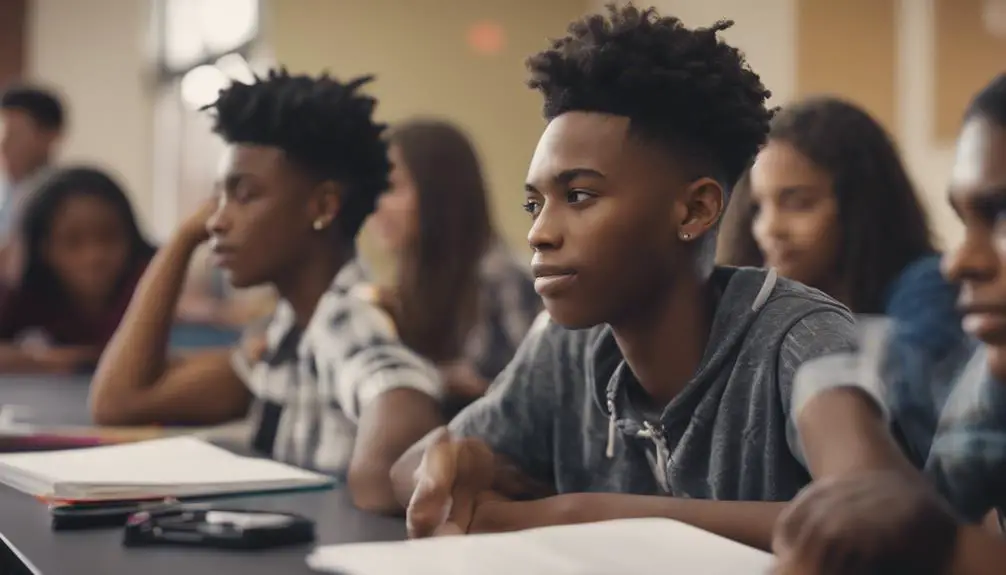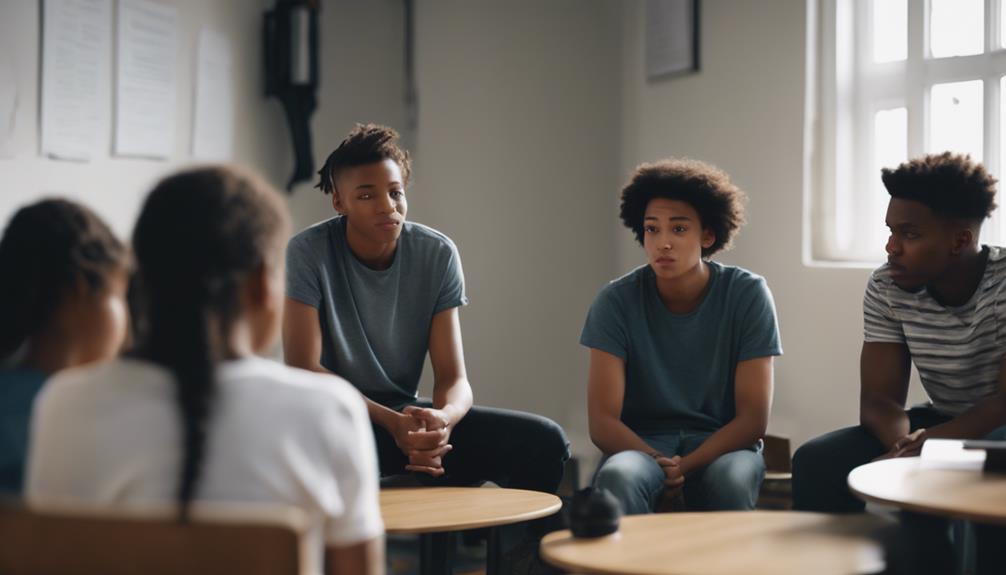Safety in the classroom is of the utmost importance. It is our duty as educators to ensure that our students are safe while they are in our care. There are many ways to make your classroom a safer place for your students.
One way to ensure safety is to have rules in place and enforce them consistently. Teachers can also create a positive climate in the classroom by being positive role models and establishing trust with their students. Additionally, teachers should be aware of any potential dangers in the classroom and take steps to mitigate them.
In this article, we will take our time to look at the various strategies to help you create a safer learning environment in your classroom. Let’s get started!
Reasons why a safe environment is important for effective teaching and learning?
1. A safe environment can help reduce absenteeism and tardiness among students.
Attendance is essential to a student’s success in school. A safe and healthy learning environment can help reduce absenteeism and tardiness among students. For example, a student who is absent or late to class is not as likely to be successful in class and may even have negative impacts on their academic progress.
The absence of students in the classroom can be a result of an unsafe learning environment. That is, unsafe classrooms discourage and demotivate students from learning. Due to that, students are not attracted to coming to school. However, having a safe classroom environment can attract and encourage students to come to school.
2. Safe classroom environments improve focus and concentration.
When students feel safe and comfortable in their classroom, they are more likely to be attentive and focused on their lessons. In addition, a safe environment can help prevent bullying and other types of harassment. By creating a safe learning environment, teachers can help ensure that all students have the opportunity to learn effectively and concentrate well.
3. A safe environment can help reduce anxiety in students.
A safe classroom environment can help reduce anxiety in students. Research has shown that 70% of US teens report that anxiety and depression are major problems for them. Unsafe learning environments can be a breeding ground for anxiety and depression in students. For example, those environments promote bullying and harassment among students. But, creating a safe environment can help reduce bullying and harassment. By creating a positive and safe learning environment, teachers can also help their students feel safer, more confident, and valued in the classroom.
4. Safe classroom environments reduce stress.
There are many benefits to creating a safe and stress-free classroom environment. A safe and positive learning environment can help reduce anxiety and stress in students. This helps them focus on their studies, be more productive, and feel more confident in their abilities.
In addition, a safe and comfortable environment can encourage students to speak up when they have concerns or feedback about the class without fear. This can lead to better communication among classmates and a greater understanding of the material being taught.
Finally, creating a safe classroom environment can help build positive relationships among everyone in the classroom.
5. A safe environment can help improve academic performance in students.
A safe environment can help improve the academic performance of students. Numerous studies have shown that a safe and secure learning environment is key to the success of students, both in terms of their individual achievement and as part of a cohesive group.
When students feel safe, they are more likely to be open and engage in constructive conversations, participate in class discussions, and complete their homework assignments. In addition, studies have found that a safe environment can also lead to reduced levels of stress and anxiety among students. This can lead to better performance on tests and other assessments, as well as increased creativity and resilience when faced with challenges in academic life.
Creating a safe classroom environment should therefore be an important priority for educators everywhere.
How to Make Your Classroom Environment Safe for Students?
There are a number of ways that you can make your classroom a safe place for your students. Below are some tips that may help you create a safe and comfortable learning environment for your students:
Step 1: Create a Safe Classroom Environment for Your Students
1. Keep all weapons, sharp, and pointed objects out of sight of students.
Objects that can be used as weapons should be kept out of sight and out of the reach of students. The best way to do this is to keep them in a locked cabinet or on a secure rack. Sharp, pointed objects should also be kept away from students. If these items cannot be safely stored, they should be disposed of properly.
2. Have a visible policy against violence.
Having a visible policy against violence in the classroom can be a powerful way to create a safe learning environment. This policy should be prominently displayed in the classroom and should be communicated to all students.
It should also be followed by everyone involved in the classroom, from teachers to administrators. By having a clear policy against violence, students will know that it is not tolerated and that they can feel safe reporting any incidents of violence.
3. Establish clear consequences for engaging in violence.
When it comes to violence in the classroom, clear consequences are essential. This means that students should know exactly what to expect if they engage in violent behavior. Consequences can include suspension from class or school, a loss of privileges, or even expulsion.
In some cases, parents may also be required to take action. As much as possible, schools should use a combination of sanctions and positive reinforcement to discourage violence.
4. Provide resources and support to students who are struggling.
One of the most important things that you can do to create a safe and healthy classroom is to identify and support students who are struggling. There are many resources available to help you identify students who may be struggling, and provide them with the support they need to achieve success in your classroom. Some common resources include:
a. Individualized interventions
b. Group counseling
c. Educational programs and services
d. Peer support groups
5. Create a safe and comfortable environment for students who need assistance.
When it comes to creating a safe and comfortable learning environment, one of the most important things that you can do is create clear and concise communication guidelines. This way, everyone in the classroom knows what is expected of them, and no one feels put on the spot when they need to ask for help.
Also, you can provide students with specific resources (such as assistive listening devices) that make it easier for them to follow along and participate in class discussions. In addition, effective classroom management strategies can help keep students on task and disciplined. For example, you can establish clear rules about student behavior and expect everyone in the class to follow them. Finally, teachers can keep a close eye on student activity levels so that they know when a student may need assistance staying focused or following instructions.
By taking these steps, you can create a safe and comfortable environment for all of your students.
6. Be prompt and responsive to concerns expressed by students.
One of the most important things a teacher can do to create a safe and healthy classroom is to be prompt and responsive to concerns expressed by students. In order to ensure that all students feel comfortable speaking up and getting their voices heard, it is important for you to have a system in place that allows them to quickly address any concerns. Additionally, it is also important for you to be consistent in your responses so that students know what behavior will be tolerated and what will not.
7. Be proactive in addressing any concerning behaviors.
Classroom safety is a top priority for educators. It is important to take proactive measures to create a safe learning environment for all students. One way to do this is to be aware of any concerning behaviors and address them immediately. If a student is exhibiting concerning behaviors, it is important to communicate with him/her and provide support in order to help him/her address the issue. In all, be sure to identify and address safety concerns before they occur.
8. Create a positive school culture that supports safety and academic success.
A safe and positive school culture creates an environment in which students can learn and thrive. Through strategies such as establishing clear rules and expectations, creating a supportive environment, and providing resources and support, you can create an environment that is safe and conducive to learning.
Positive school cultures have been shown to support student achievement, as well as safety concerns such as bullying and harassment. By creating a safe and positive learning environment, you can help your students achieve their fullest potential.
9. Create a safe environment for all students, including those with disabilities.
When it comes to creating a safe environment for all students, it is important to consider their individual needs and limitations. One way to do this is by implementing strategies that allow everyone in the class to feel safe and supported.
Another important strategy is ensuring that all students have access to appropriate safety educational materials and resources. This will help raise everyone’s awareness of their personal safety and that of others in the classroom.
In addition, it is important to create an environment that is free from violence, threats, and harassment.
By taking these steps, you can create a safe learning environment for all of our students.
10. Communicate with students and staff about safety concerns and how they can be addressed.
Communicating with students and your colleague teachers about safety concerns is important in creating a safe learning environment. It is important to be conscious of potential dangers in the classroom and school and take steps to address them.
Some ways to communicate safety concerns include:
a. Setting up a communication plan with students and staff before an incident occurs. This can help ensure that everyone is on the same page about what needs to be done in case of an emergency.
b. Make sure all exits are clearly marked and accessible at all times.
c. Reminding students not to access areas they are not authorized to go to, such as the roof or basement.
d. Posting signage that warns of potential dangers, such as “No Trespassing” or “Keep Out”.
e. Creating rules and regulations surrounding acceptable behavior. This can help ensure that all students are following the same guidelines.
f. Monitoring student behavior and addressing any unsafe behaviors immediately.
g. Working with parents to provide information about school safety and what they can do to help their children be safe.
11. Work with parents to create a positive home environment that supports safety and academic success.
One of the most important ways to create a safe and positive learning environment for children is to have strong relationships with their parents. When working with parents, it is important to remember that they are the primary educators of their children and should be treated as such.
You should be respectful and listen attentively to parents’ concerns, suggestions, and ideas pertaining to their child’s education. Work together to develop a parenting plan that will support both educational success and safety in the classroom.
12. Provide educational materials, such as posters, that promote safe behavior.
Posters that promote safe behavior can be helpful in creating a safe learning environment. They can help remind students of rules, help them understand the consequences of breaking rules, and provide examples of how to behave safely. Additionally, posters that are designed to celebrate safe behavior can also be beneficial.
13. Create a safe environment for students to report concerns.
Creating a safe learning environment for students to report concerns is important. You should have a policy in place that addresses how and when students can report concerns. Encourage students to speak up when they feel uncomfortable or unsafe. Share information with students about what they can do when they feel unsafe.
Also, create a safe zone for students to report concerns or concerns that they have with others. Have a designated space or location in your school where students can report issues they are experiencing or other concerns they have with others.
14. Educate students on healthy relationships.
All students need to know how to have healthy relationships. Educate students about healthy relationships and how to handle bullying and other relationship concerns. Identify a healthy relationship role model, who is representative of the school and community. In addition, teach them how to support their peers and how to be an ally for their peers who are experiencing bullying or other problems.
15. Provide support to students who are involved in bullying or other unsafe behaviors.
Bullying and other unsafe behaviors can have a devastating impact on students’ lives. Schools have a responsibility to provide support to students who are involved in bullying or other unsafe behaviors, both in the classroom and outside of it.
There are many ways that schools can provide support to students who are involved in bullying or other unsafe behaviors. You and your school can:
a. Create a safe learning environment by providing resources and support for students who are being bullied or experiencing other unsafe behavior;
b. Provide training for teachers on how to identify and address bullying and other unsafe behaviors;
c. Provide counseling services for students who are experiencing trauma as a result of being bullied or experiencing other unsafe behavior;
d. Work with parents to create a positive home culture that supports safe behavior.
16. Keep the classroom clean and organized.
Keeping the classroom space clean, organized, and free from distractions affects the safety of the learning environment. Teachers can help students keep the space organized by making it a place where they enjoy being. Ensure that student safety is included in the organizing process. Take steps to ensure that students are not being exposed to risk.
This can be done by making it clear that the school is a safe place, and by communicating clearly with students about school policies and procedures. For example, an unclean and disorganized classroom can cause accidents in the classroom. Therefore, you must work hard with your students to make sure your classroom is clean and organized.
17. Stay alert when you are in the room with your students.
Be aware of your surroundings, and stay alert for any danger or potential danger. If you see something suspicious, do not hesitate to call for backup. If you are in a situation where you need to call for help, do not hesitate to call the security department or the fire department.
These professionals will be able to assist your school and calm the situation down. Be aware of the safety net that is available in your school.
18. Be aware of your student’s moods and behaviors.
If you see something that makes you concerned, do not hesitate to contact the school or parents for assistance. Be aware of the signs that your student may be in danger, and take appropriate action.
For example, if a student is acting aggressively, or being violent, do not hesitate to call the school or parents for assistance. You are also encouraged to talk with your child and to learn how they are feeling and what they may be thinking.
19. Be in control of your classroom.
Do not become a victim of your student. If you are in control of the classroom, it is much easier to prevent harm to your child. It is important to know your child and how they think. If you are not in control of the classroom, it is much harder to prevent harm to your child. By knowing your student well, you will have a better chance of preventing harm.
Step 2: Use Common Sense Judgment
When it comes to safety in the classroom, you should use common sense judgment. This means that you should pay attention to your own safety and the safety of your students, and make decisions based on what is safest for everyone involved. Some basic guidelines for keeping a safe classroom include:
1. Establish and enforce rules and regulations.
2. Keep things organized and clean.
3. Keep all equipment functioning properly.
4. Make sure all students know how to behave in a safe environment.
Step 3: Have a Plan for Emergencies
In order to create a safe and healthy learning environment, it is important to have a plan for emergencies. One way to do this is by having emergency procedures and guidelines posted in a visible location, such as near the front door of the classroom.
Another way to create a plan for emergencies is by having students sign an emergency plan sheet. This sheet should include information about who should be contacted in case of an emergency, what should be done in the event of an emergency, and where to find emergency supplies.
Finally, it is important to have regular drills that test students’ knowledge of emergency procedures and guidelines.
Conclusion
Creating a safe and secure environment for your students is essential. By following these tips, you can create a climate where learning can take place without fear of harm.




















